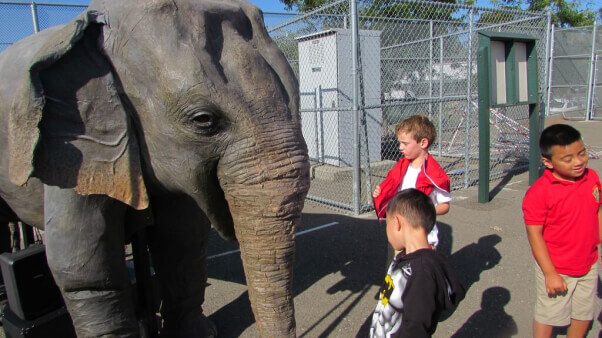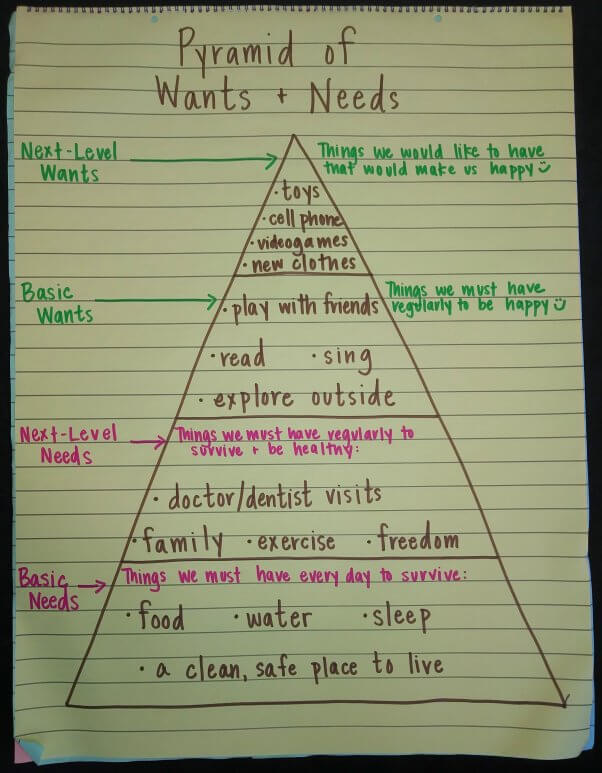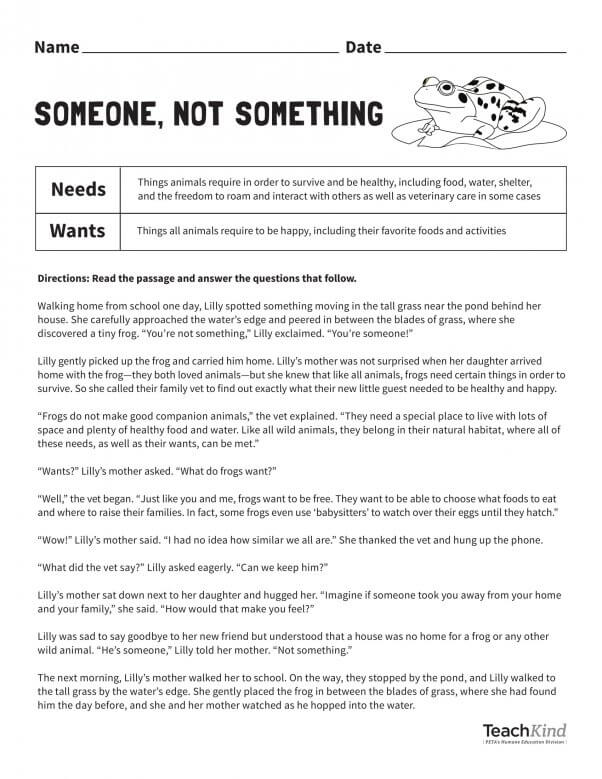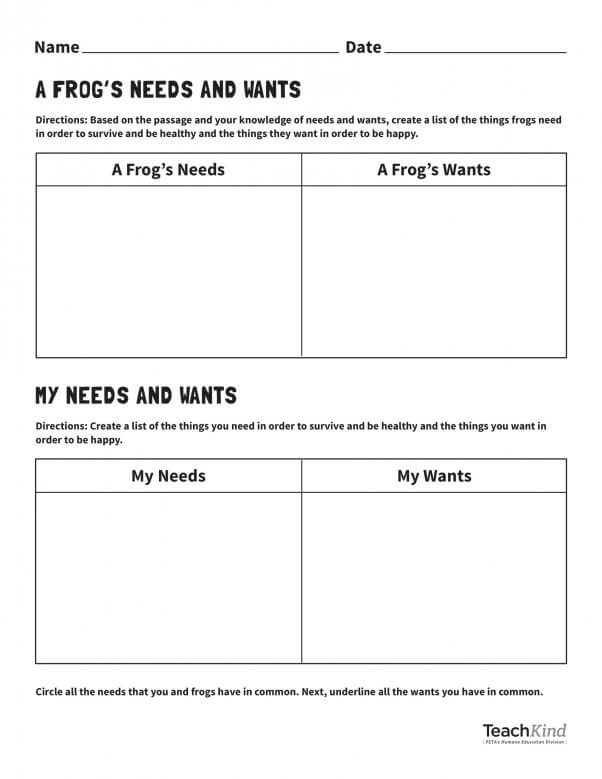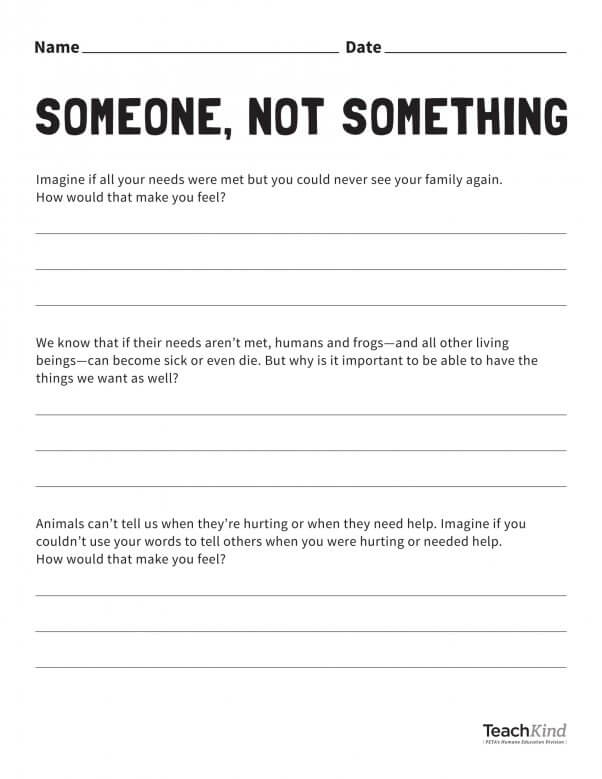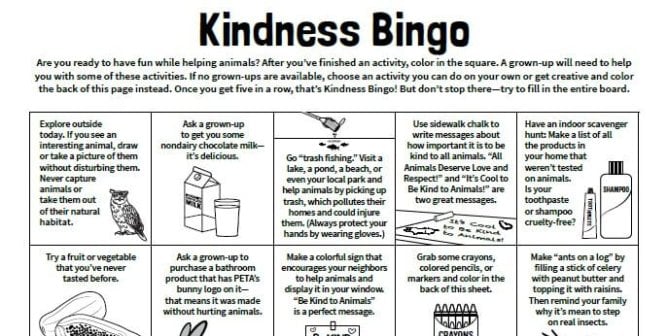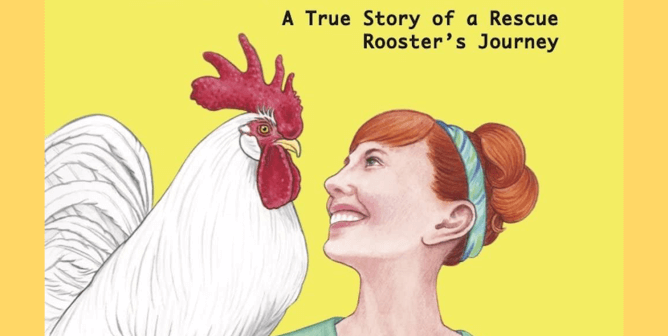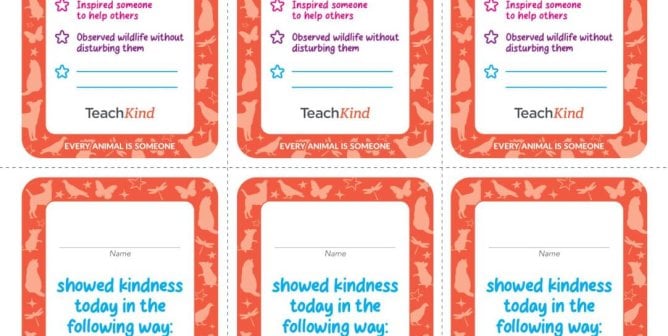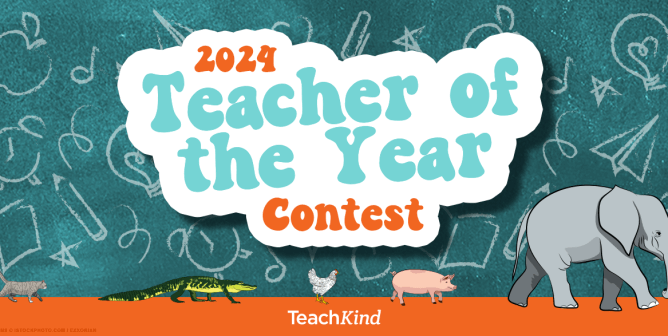Someone, Not Something: Animals Have Needs and Wants, Too! (Grades 3–5)
Thousands of schoolchildren across the country are getting the opportunity to meet and interact with a “recently freed elephant,” thanks to PETA’s walking, talking 6.5-foot-tall robot named Ellie, whose larger-than-life personality and message of compassion are captivating—and empowering—young audiences.
Ellie introduces herself as “an ambassador for all animals.” Her mission? To inspire kids to see past the differences between humans and other animals and to treat all living beings—regardless of their species—the way they wish to be treated. Ellie’s powerful presentation highlights the importance of showing empathy toward others and reminds students that bullying is never acceptable. It’s also an excellent springboard for the following lesson on needs and wants. Use these resources to discuss with students the importance of acknowledging that other animals are individuals with thoughts and feelings—and the importance of considering not just animals’ basic needs but also their unique wants.
Are you teaching virtually? Your students can experience Ellie’s presentation from the safety of their homes with this interactive video:
It’s important for students to be able to distinguish between needs and wants for economic reasons—we want them to grow into responsible consumers who understand that groceries, the water bill, and health insurance payments take priority over lavish vacations, expensive clothes, and dining out. But students must also learn that self-care is essential to our overall health and well-being, too, and that from time to time, it’s OK—and even vital—to spend money on things that we want. For example, a plane ticket home to visit family for the holidays or a membership to a yoga studio, though certainly not necessary to our immediate survival, should be budgeted for (when possible) if we want to live a long and fulfilling life. This is an especially important lesson for students who have experienced trauma. As educators, we must take into consideration the adverse childhood experiences our students may have had and use trauma-informed strategies to help them recover and succeed in school and beyond.
If you haven’t already covered needs and wants with your students, begin by explaining these concepts using a pyramid graphic organizer. Draw a large triangle on the board and title it “Pyramid of Needs and Wants,” loosely based on Maslow’s hierarchy of needs. Divide the pyramid into four levels. From the base up, label each section and provide a short description of each as follows. If you can, use two different colors to distinguish between needs and wants (see the image below for reference).
- Basic Needs: things we must have every day to survive
- Next-Level Needs: things we must have regularly to survive and be healthy
- Basic Wants: things we must have regularly to be happy
- Next-Level Wants: things we would like to have that would make us happy
Before filling in the pyramid, explain each section. Point out the difference between a need and a want. Our needs (and those of all living beings) must be met in order for us to survive. Our wants aren’t necessary for our survival, but they can make us happy and healthy.
Fill in each section of the pyramid, recording student input as you go. Keep in mind that this preliminary activity should be about the needs and wants of humans so that students can gain a basic understanding of these concepts. Later in this lesson, they’ll discuss the needs and wants of other animals and how similar they are to those of humans. Use the following talking points to guide students’ thinking.
- Basic Needs: Ask students what they need every day in order to survive. (Answers: food, water, sleep, and a clean, safe place to live.) Point out that this section of the pyramid is the largest of the four because we need these things every day—without them, we can become sick and even die.
- Next-Level Needs: Ask students what else they need in order to survive and be healthy. (Answers: regular visits to the doctor and dentist, family to take care of them and love them, exercise, freedom to move around, etc.) Ask students to consider what would happen if one of these needs weren’t taken care of over time. For example, if you never went to the doctor, you could become sick. Or if you never exercised, you could become weak and unhealthy. Point out that this section of the pyramid is slightly smaller than the one below it because we don’t need these things as often or as urgently as we need the ones in the first section.
- Basic Wants: Ask students to think of things they like to do that costs little to no money. (Possible answers: play outside with friends, read, sing, spend quality time with a family member, explore nature, eat their favorite foods, or snuggle with their animal companion.) Note that while we can survive without these things, they make us happy, some allow us to connect with those we love, and they’re good for our overall health and well-being. Point out that this section of the pyramid is slightly smaller than the one below it because these things are not as essential as our basic needs and next-level needs.
- Next-Level Wants: Ask students to think of material items they like or things they like to do that cost money. (Possible answers: videogames, skateboarding, toys, new clothes, cell phones, or candy.) Explain that these things are like “icing on the cake”—we can survive without them, and in excess, they may even cause us problems. For example, if you spent all weekend playing videogames, you probably wouldn’t be meeting your next-level needs or fulfilling your basic wants, which, as discussed, are good for our health. Point out that this is the smallest section of the pyramid because it’s best if we enjoy these things occasionally or in small amounts.
Animals have wants, too, and just like us, they must be allowed to satisfy them in order to be their happiest and healthiest. All animals have the ability to feel pain and suffer, love their families, and have a strong desire to live free from harm and human exploitation. Use the following reading passage and activities to encourage students to see other animals—even those as seemingly different from humans as frogs—as individuals with both needs and wants.
Review and discuss the following answers in each category as a class.
- A frog’s needs: water, healthy food, a clean and safe place to live, space to hop around
- A frog’s wants: favorite foods, a home in nature, freedom to engage in natural frog activities
- My needs: water, healthy food, a clean and safe place to live, space to move around
- My wants: Answers will vary based on students’ experiences. (Possible answers: time with friends and family, favorite foods, favorite toys.)
Discussion Questions
- Imagine that all your basic needs were met but you could never see your family or friends again. How would that make you feel?
Answers will vary based on students’ experiences. Possible answer: Even if I still had healthy food and water and were safe from danger, I’d miss my family and friends. It would make me very sad never to see them again.
- We know that humans and frogs—and all other animals—can become sick and even die if their needs aren’t met. But why is it important for us to have the things we want, too?
Answer: It’s important to have the things we want because they make us happy. Being able to enjoy the things we want, like our favorite foods and activities, can actually make us healthier.
- Animals can’t tell us when they’re hurt or when they need help. Imagine that you couldn’t use words to tell others when you were hurt or in need of help. How would that make you feel?
Answers will vary based on students’ experiences. Possible answer: I’d feel frightened if I couldn’t tell someone when I was hurt or in need of help. I’d be afraid that I wouldn’t be able to get the help that I needed. When I’m hurt, it makes me feel better to tell someone how I’m feeling.
Stay up to date on all the latest animal-friendly content from TeachKind by signing up for TeachKind News:
By submitting this form, you’re acknowledging that you have read and agree to our privacy policy and agree to receive e-mails from us.
